I’ll try to compare the two most popular islands of the Canary archipelago – Tenerife and Gran Canaria – based on a month of traveling through these islands during the winter and early spring of this year.
Which one is better, which is more suitable for a beach vacation, and which is more interesting for an educational trip?
A common question on forums is: where is better to go for a vacation, Tenerife or Gran Canaria? Which of these islands is better for travel and relaxation? Where is it cheaper, where are the more interesting sights, which island has better beaches, and what about the weather? I’ll try to answer all these questions.
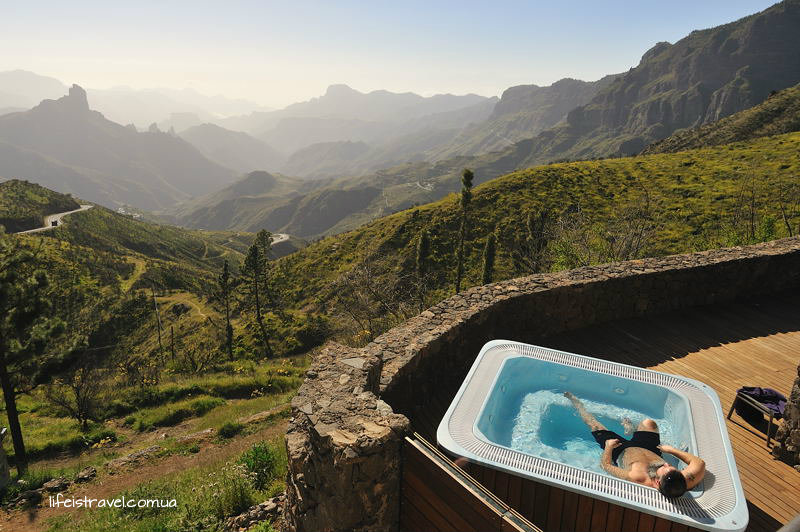
Popularity
Although tourism on the Canary Islands began with Gran Canaria, Tenerife is now far more popular. In this case, Gran Canaria doesn’t stand a chance. However, in some areas, Gran Canaria outshines Tenerife.
If you’re a typical tourist looking for good beaches, amusement parks, a variety of landscapes, and historical towns, then Tenerife is the place for you.
If you’ve already been to Tenerife and want something new or a bit different, or if you’re not fond of relaxing among thousands of your fellow countrymen and find Las Americas beach reminiscent of Crimea or Anapa, then Gran Canaria is a better option.
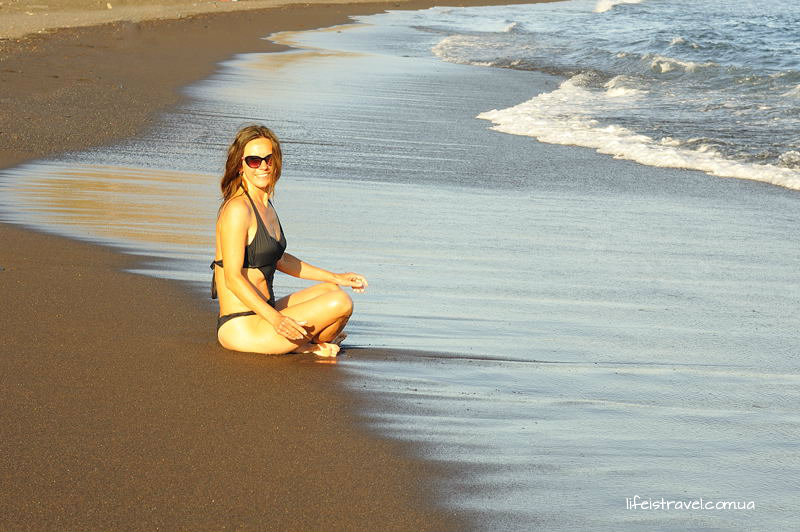
Where is the weather better – Tenerife or Gran Canaria?
Dry and warm in the south with little rainfall, and forever spring-like, green, and blossoming in the north, where there might be some rain in winter and spring. This description applies to both Tenerife and Gran Canaria.
They have two completely different climates on the same island. There’s no real advantage between the two – any weather differences are no more than statistical discrepancies.

Historic villages
On both Tenerife and Gran Canaria, most historic towns are located either in the north of the islands or in the mountains closer to the center.
On Tenerife, you have Masca village, Garachico, La Orotava, and others. On Gran Canaria, there’s Teror, Firgas, Arucas, and Aguimes.
In my opinion, it’s a tie. It’s worth noting that the villages on Tenerife are more famous and more promoted than those on Gran Canaria. We equally enjoyed walking around on both islands.
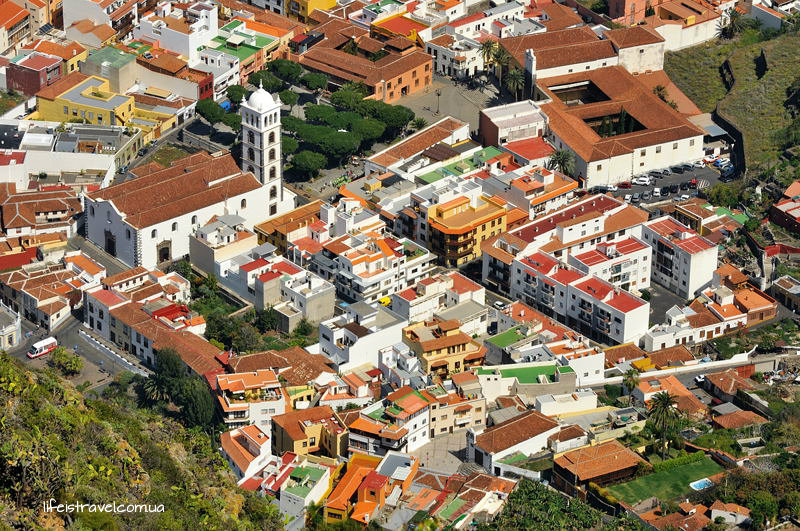
Landmarks of Tenerife and Gran Canaria
Both islands are rich in locations worth visiting. They share similar climates and a variety of natural zones. However, the devil is in the details.
The most spectacular sights on Tenerife are the Anaga National Park in the north of the island and the town of Puerto de la Cruz. Gran Canaria has no direct equivalents to these places.
Number two on Tenerife, in my opinion, is the national park and the highest peak – the dormant volcano Teide. The roads leading to it are incredibly beautiful; there are at least three, and all are worth your attention.
Gran Canaria counters with its highest point – Pico de las Nieves (1,813 m) and the winding road through the clouds leading up to it. We actually liked this location slightly more than the famous Teide volcano (3,718 m) on Tenerife.
Only on Gran Canaria can you rise from a warm beach to the clouds in a cool and damp forest, hike among the clouds, and return all in one day.
Gran Canaria’s main city, Las Palmas, is much more interesting than Tenerife’s capital, Santa Cruz, but it pales in comparison to Puerto de la Cruz in the north of Tenerife.
The top attraction on Gran Canaria is the Maspalomas sand dunes – a unique place with no equivalent on Tenerife. The closest comparison would be the dry and windy El Médano, but it’s still quite different.
We included Gran Canaria in our itinerary specifically to see the famous dunes and a slice of desert by the ocean, and we didn’t regret it one bit.
The Los Gigantes cliffs on Tenerife are another amazing attraction and a must-visit. Comparable to them are the cliffs near the village of Agaete on Gran Canaria – the same black vertical cliffs dropping into the sea, with picturesque fishing restaurants along the shore. In my opinion, Los Gigantes has become a bit too touristy due to the overwhelming number of large hotels and tourist cafes in the area. Agaete, on the other hand, is still relatively quiet and cozy. While there are tourists (Agaete is also a small port where the Fred Olsen ferry arrives from Santa Cruz, Tenerife), the numbers are manageable rather than overwhelming.
If we summarize the comparison of attractions on Tenerife and Gran Canaria, Tenerife is the clear leader in terms of must-see spots. Gran Canaria tempts with its dunes in Maspalomas and mountain hiking trails in the island’s center. Tenerife offers the nature of the north, Anaga National Park, and Mount Teide, the historic charm of Puerto de la Cruz, and surfing locations on the southern coast.
Now, let’s compare the beaches and entertainment options, where things are quite clear.
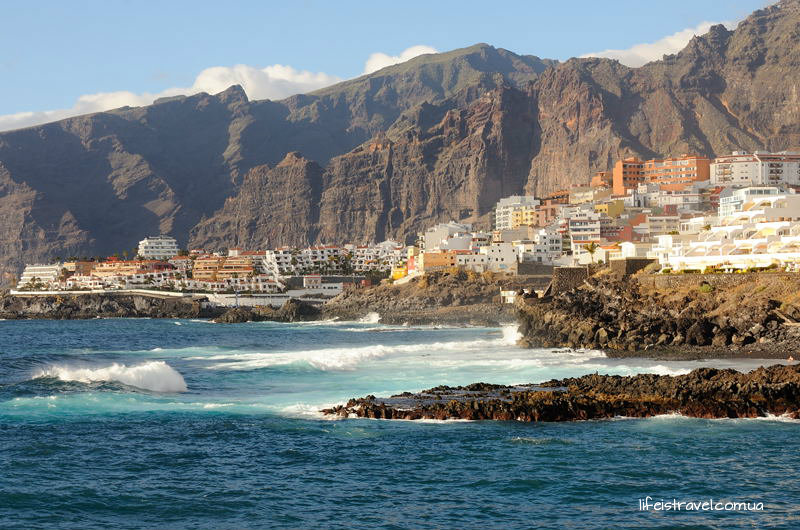
Entertainment
Without getting into too many details, I’ll say that Tenerife is the absolute leader. Here, you’ll find the top attraction – Loro Park, the Siam amusement park, and many smaller local amusement parks.
Gran Canaria doesn’t have much to compete with. Holiday World in Maspalomas, a few water parks in popular tourist spots, and the theme park “Hangar 37” fall short in comparison to Tenerife’s offerings, although you won’t get bored.

Which island has better beaches – Tenerife or Gran Canaria?
Let’s be honest, most tourists travel to places like the Canary Islands for the beaches and the sea, not for history or mountain hikes. I love the Canary Islands, but I’ve never considered them solely beach destinations.
The ocean is more on the cool side than warm, although you can swim even in January – the ocean is heated by the Gulf Stream and other climatic factors to about 18–21 degrees. But when has that ever stopped us? !
Tenerife’s beaches are mostly located on the island’s southern coast, with dozens of beaches that vary in shape, appearance, and sand color. I’ve already written extensively about the best beaches on Tenerife, so I won’t repeat myself.
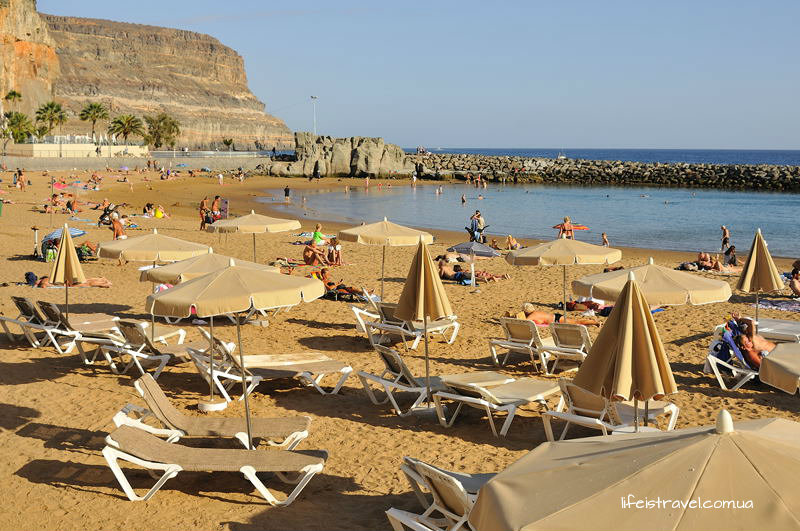
As for Gran Canaria, there’s Playa de Las Canteras, located in the island’s capital, Las Palmas. Its strengths include a wide strip of golden sand, a length of several kilometers, and the longest promenade on Gran Canaria, lined with cafes and restaurants. You could compare it to Las Americas on Tenerife, but Las Canteras is less touristy, and it’s located in a real Canarian city with locals, not in a tourist hub like Las Americas.
Among the most beautiful beaches on Gran Canaria, I would highlight Puerto de Mogan and the beaches near Puerto Rico. There’s also Playa del Inglés, but it’s mostly frequented by nudists and people of the LGBTQ+ community. I have nothing against these communities, but I can’t recommend this beach to everyone.
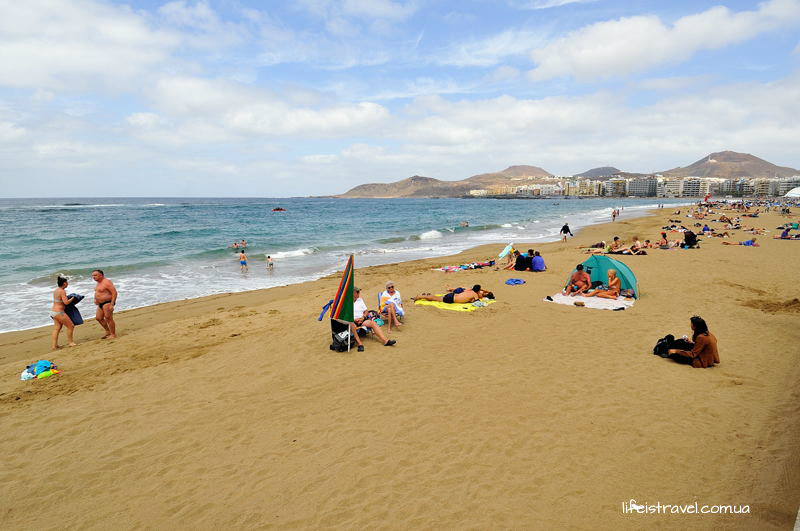
Where are there more tourists?
Statistics show that the ratio of tourists visiting Tenerife to those visiting Gran Canaria is about 2 to 1.5. So, for every 2 million tourists on Tenerife, 1.5 million prefer Gran Canaria.
The difference is insignificant, and considering that Tenerife is slightly larger than Gran Canaria, the difference in the number of tourists per square kilometer is negligible.
Tourists on Tenerife are mainly concentrated in a few areas – Las Americas, Los Cristianos, and Costa Adeje. Many tourists visit Teide due to its popularity, while the rest are spread across the north, east, and west of the island.
Tourists on Gran Canaria are primarily found in the capital, Las Palmas, and around the Maspalomas dunes in the south. Other areas of Gran Canaria, including its mountainous central part with excellent hiking routes, remain relatively free of tourist crowds.
There are far more Russian-speaking tourists on Tenerife than on Gran Canaria, where most visitors are Europeans aged 40 and above. Gran Canaria is generally calmer than Tenerife. If this is important to you, choose Gran Canaria – you won’t be disappointed.
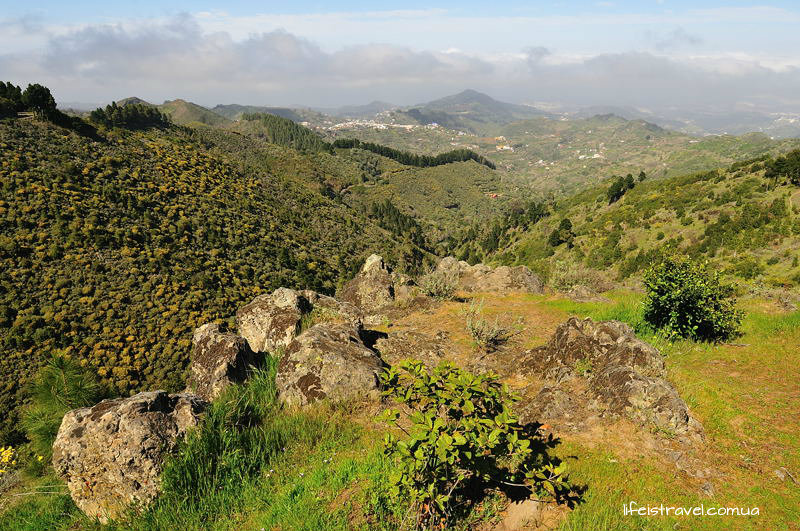
How about prices?
This is a straightforward question. Prices are roughly the same on both islands. However, Tenerife has a slight advantage – due to higher competition, prices here are somewhat lower than on Gran Canaria.
On Tenerife, you can usually find free parking almost everywhere, whereas on Gran Canaria, you’ll likely have to pay.
The same trend applies to accommodation prices – Gran Canaria is about 10-15% more expensive than Tenerife. This could be due to historical reasons or the supply-demand ratio, but overall, staying on Tenerife is slightly cheaper.

How much time is needed to explore these islands?
Tenerife is larger and has more interesting locations and attractions than Gran Canaria. To see at least all the main sights on Tenerife, you’ll need at least 10 days.
Gran Canaria can be covered in about 3 days. We spent a week there and visited all the locations marked on tourist maps, in travel reports, and on Google Maps – literally stopping by every corner.
On Tenerife, even after three weeks, we didn’t manage to see everything. We alternated between active trips and relaxing by the ocean, but there were still a few minor spots left unexplored.
The ideal travel format for Tenerife and Gran Canaria is a ratio of one to three. The time spent on Tenerife can be divided by three, and that will be enough to enjoy Gran Canaria. This applies to active travelers. If you prefer a more laid-back vacation, you can spend as much time as you like on either island, as long as you have the money and desire.
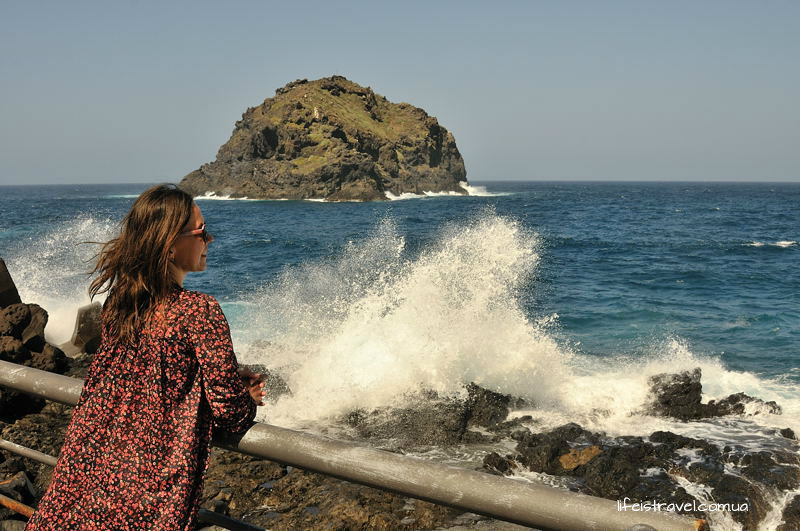
Our review of Tenerife and Gran Canaria
Tenerife has a more touristy south and a rugged, beautiful north. Gran Canaria leaves a pleasant impression but feels a bit old-fashioned. Sometimes, it seems like time stopped here in the 1970s.
The infrastructure on Tenerife is better, while Gran Canaria, even in its capital Las Palmas, can feel a bit run-down in places.
Both islands have airports, with Tenerife even having two – one in the south and one in the north.
The roads are excellent everywhere. On Tenerife, there just seem to be more of them. Mountain roads are better on Tenerife. On Gran Canaria, you might occasionally end up on a dirt road, but this is more of an exception than a rule.
Gran Canaria has more local color, something you won’t experience if you stick to the touristy south of Tenerife. However, Tenerife’s north is unbeatable.
For nightlife, clubs, beaches, and entertainment – head to the south of Tenerife! For nature, mountain hikes, and local cuisine – go to Gran Canaria or the north of Tenerife.
Both islands offer good beach vacations, but Tenerife has a greater selection of nice, less crowded beaches. The water temperature on Tenerife is about 0.5-1 degree warmer, but that might have just been a seasonal variation during our visit. I’m not insisting on Tenerife’s advantage here.
The variety of accommodations, vacation spots, and better prices – all are in favor of Tenerife.
Tenerife is a fun, lively, modern island, while Gran Canaria feels old-fashioned and more remote. The contrast isn’t huge, but as they say, the devil is in the details, right?
Ideally, you should visit both Tenerife and Gran Canaria, just keep the “three-to-one” ratio in favor of Tenerife for the best experience.
If you plan to visit both islands, I would start with Gran Canaria and finish your vacation on Tenerife. That way, your impressions will build, and you’ll have more to remember and compare. If you’re only planning to visit one island and it’s your first time, then definitely go with Tenerife.
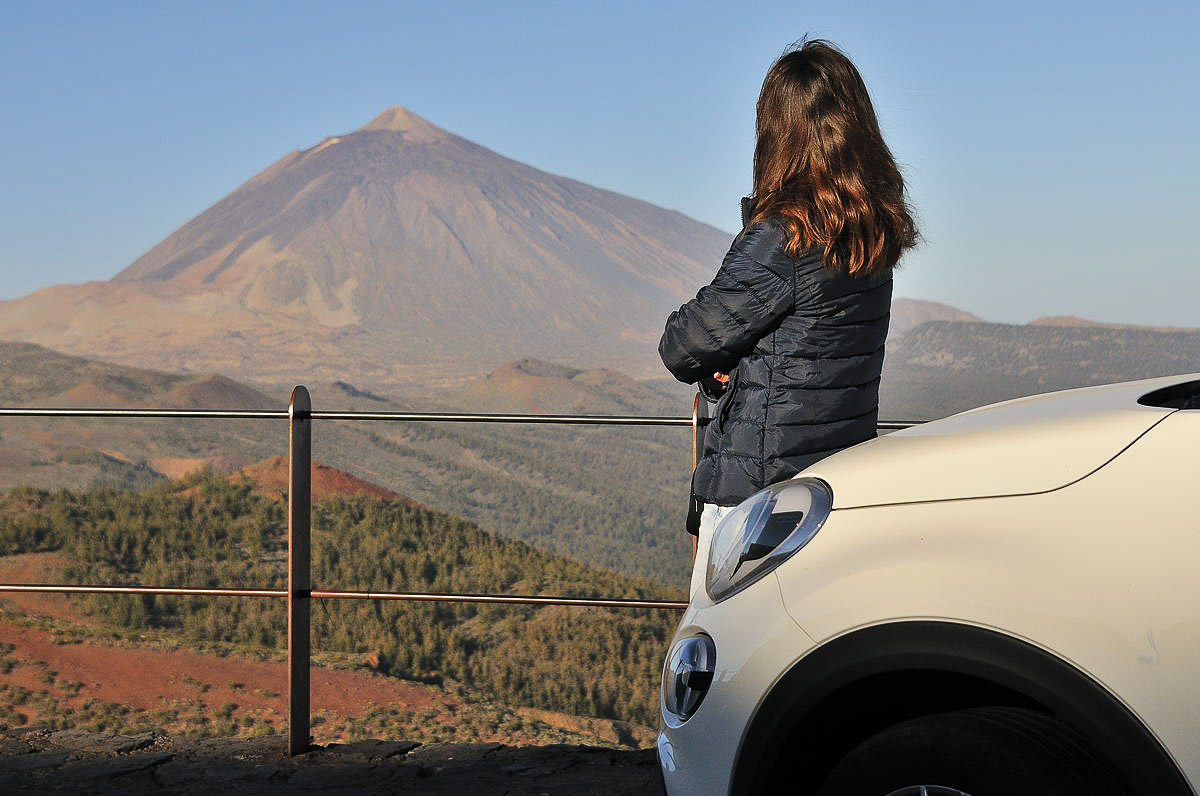
Where to find hotels on the Canary Islands
We traditionally search on Booking.com for Tenerife or Gran Canaria.
Find accommodation on Tenerife >>
Find accommodation on Gran Canaria >>
Where to buy cheap tickets to the Canary Islands
I’ve been using Aviasales for a long time with great success. It’s a powerful search engine that finds the best deals, including from low-cost airlines. I’ve never had any issues with it and highly recommend it.